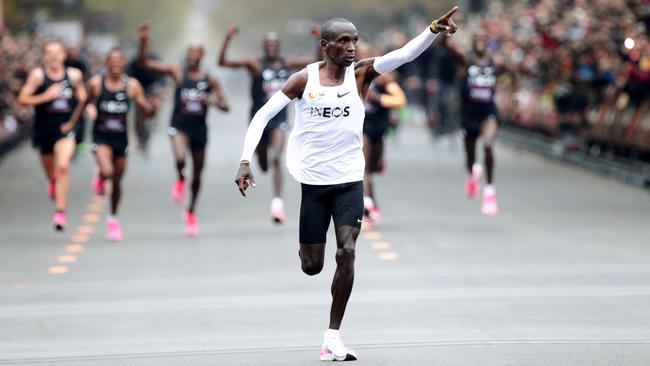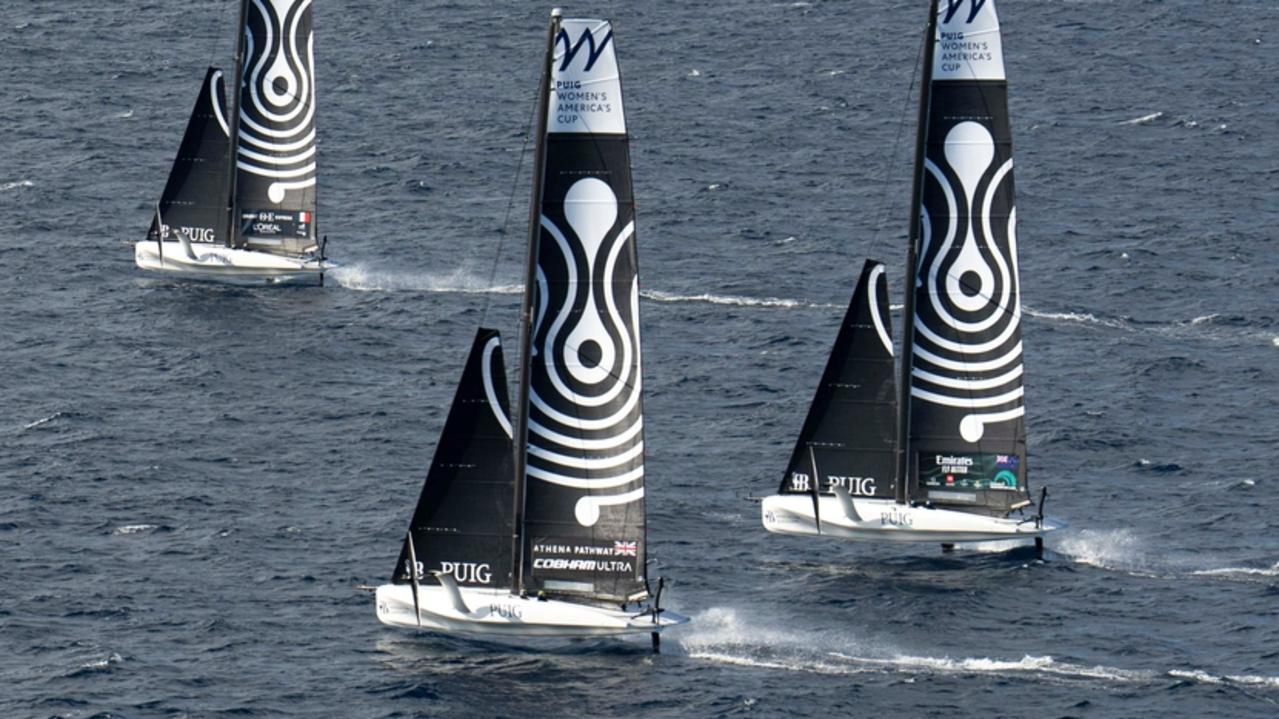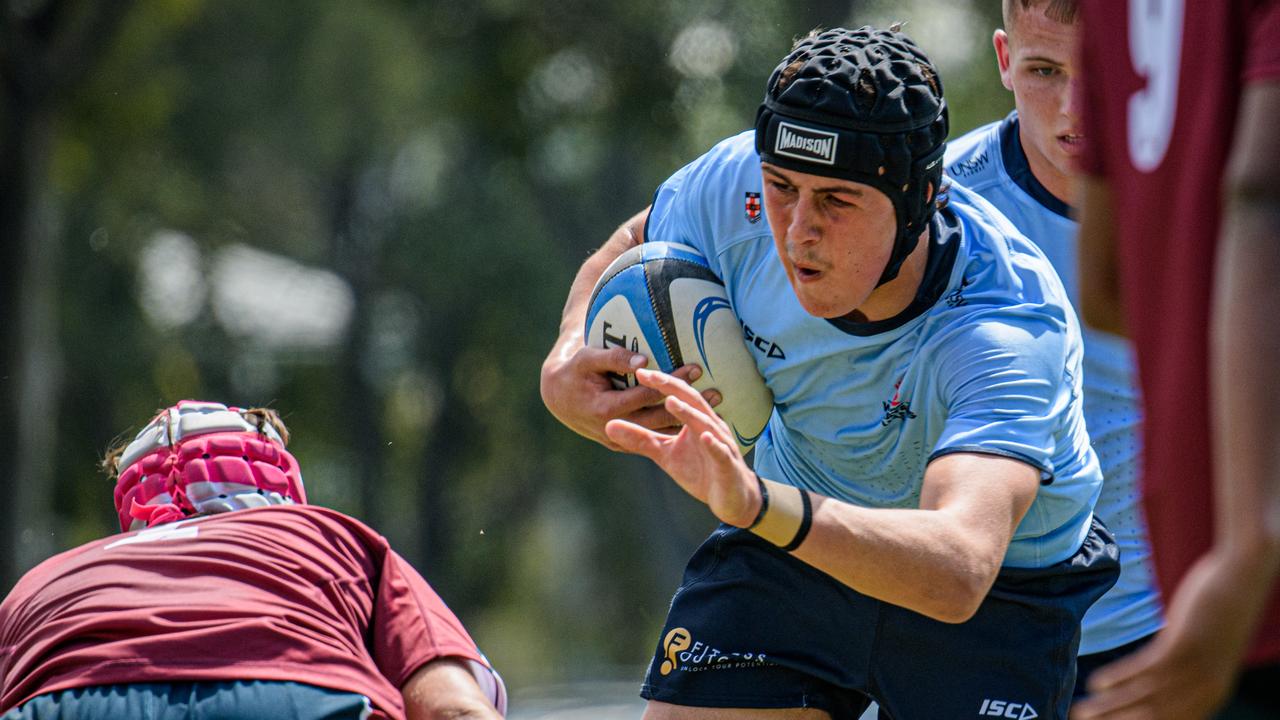Adidas Adizero Adios Pro ‘super-shoes’ take four men to world records in one race
The age of the super-shoe has entered a new realm after four men shattered a world record in a single race and World Athletics passed a rule allowing prototypes to be worn.

The age of the super-shoe has entered a new realm after four men shattered a world record in a single race and World Athletics passed a rule allowing prototypes to be worn.
Jaws have been dropping in athletics over the past two years as world records have tumbled on the track and the road, but the Valencia Half Marathon pushed the parameters late on Sunday (AEDT). The first four finishers became the only men in history to run under 58 minutes, with the winner, Kibiwott Kandie of Kenya, demolishing the existing mark by 29 seconds.
Yet his time of 57 minutes 32 seconds was only five seconds better than the second-placed man Jacob Kiplimo. The top four all went inside the existing world record, the first time that had happened in a race since the women’s 800m at the 1976 Olympics.

It again raised the debate about the benefits of shoe technology. Professor Yannis Pitsiladis, who sits on the IOC’s medical and scientific commission, said: “Why would anyone watch what amounts to a shoe arms race?”
Toni Minichiello, who coached Great Britain’s Jessica Ennis-Hill to Olympic gold, also questioned World Athletics’ rule change. “It means you don’t know if you can believe what you are seeing — is it the athlete or the shoe?”
Kandie was wearing Adidas Adizero Adios Pro shoes and not the Nike versions that have been ripping up the record books in recent years, suggesting the Olympic postponement has allowed other brands to narrow the tech gap.
World Athletics reacted to the falling times by bringing in new rules in February limiting the number of fixed plates inside the shoe and the thickness of the sole. Many felt those rules had not gone far enough, but pressure from shoe manufacturers has forced the governing body into another change.
Previously, shoes worn in competition had to be on the market and available to all athletes. Under the new rule, prototypes can be used in all races, outside the Olympic Games and World Athletics series, “prior to their availability to other athletes” if they meet technical specifications. The “development period” lasts 12 months.
For many the horse has long bolted. Minichiello said: “World Athletics had a chance to be all in on shoe technology or all out, like swimming did in banning those suits. They have gone all in.”

He said he thought the new rule was open to manipulation. “Let’s say a brand has two athletes — one they have invested in as the face of a global marketing campaign and one they haven’t. Which one do you think gets the new prototype?”
Tim Hutchings, an Olympian, commentator and co-founder of the Brighton Marathon, has also been left frustrated by the pace of technological change.
“It’s created this atmosphere of disbelief and superficiality to world records being set, because it seems the attention to regulating tech advances didn’t accommodate fully any unpredictable and possibly unacceptable benefits,” he said.
“Now you’re left wondering what the world record will be in a few months because lumps are being chopped off.”
The wider world sat up and took notice 14 months ago when Eliud Kipchoge broke the two-hour marathon barrier in Vienna the day before Brigid Kosgei took 81 seconds off Paula Radcliffe’s 16-year-old marathon world record in Chicago.
“Brigid Kosgei’s run last year was the first massive warning sign that there was something rather ridiculous going on,” Hutchings said.
“It’s diluted the worth of records and personal bests. That’s a great shame because the heritage of the sport is so rich and world records have always commanded massive respect, but now they are almost two-a-penny.”
Earlier this year, Jo Pavey, the five-times Olympian, said the shoe developments had made her wonder if it was worth even trying to make it to Tokyo.
“In my career I’ve had to deal with all the doping and then I’ve been battling with people dishonestly taking thyroid medication,” she told The Times of London.
“Now they are all wearing this shoe. It’s another thing to contend with.”
The Times
More Coverage







